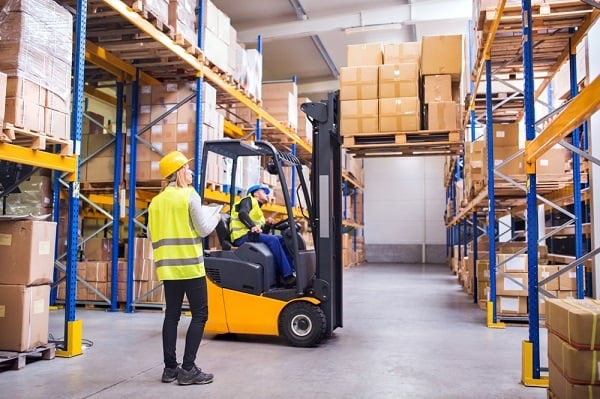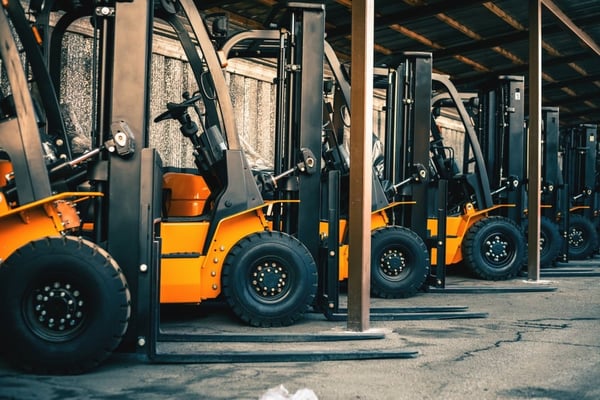Forklifts are incredibly useful machines used for carrying heavy loads. When operating a forklift, it’s important to follow workplace health and safety procedures, considering these vehicles weigh over 4000kg. They have been known to cause work-related injuries and deaths – hence the high-risk work licence. Below are some useful forklift safety tips worth considering to reduce your risk of injury and prevent accidents in your workplace.
Stay safe with expert forklift hire
Tip 1 – Do pre-operational safety checks
First and foremost, ensuring the operator has been appropriately trained and holds an up-to-date forklift licence is important. Qualified operators that also wear the appropriate clothing and head/footwear are key factors in certifying that any accidents related to poor maintenance and lack of operational understanding are prevented. In addition to this, examining equipment before use is also important, especially as there are different types of forklifts.
This includes:
- Checking that the brakes, lights, horn, steering wheel, mast, reversing beeper, seatbelt & tyres are in good condition
- Knowing the weight limit of the forklift
- Double-checking there are no gas leaks in the fuel lines if your forklift is gas-powered
- Check the lifting forks are in good condition and are centred on both sides of the mast

Tip 2 – Do operational safety checks
After starting up a forklift, there are several safety guidelines to follow such as operating at a safe speed, avoiding harsh braking (especially when carrying a load), keeping clear of the mast, and not overloading (i.e. going over the capacity listed for your forklift). While operating following all safety procedures and making sure your load is stable and secure will help avoid overturning of the vehicle and prevent the load from falling off when the forklift is extended.
Other simple checks include:
- Ensuring the lifting tines are secure into the pallet, and the load is stable before lifting or driving off. Using rope or binds to keep the load in place is important to remember.
- Always put the heavy end of the load against the load backrest.
- Slow down when changing direction/ on wet or greasy surfaces.
If you need to hire a forklift for your next project, iseekplant has you covered!
Tip 3 – Be aware of your surroundings
Consider the surrounding environment. Watching out for pedestrians and making sure you have a clear line of sight is important in avoiding hazards. Slow down and drive slowly when approaching blind corners – make use of the horn. If a load restricts your vision, always have someone guide you. Taking note of any ramps, cables, uneven floor, and ceiling clearance/overhead obstructions in the working vicinity prevents any issues that may arise when driving around and raising the mast.
Tip 4 – Parking and re-fuelling
If you are temporarily dismounting, only leave the engine running if the vehicle has completely stopped, and is in a park position gear, with the parking brake effectively engaged. If you are entirely done with the forklift, ensure you lower the forks and park on even ground with the ignition turned off and keys removed. If your forklift is gas-powered, it is recommended to turn off the gas and to park away from ignition sources, doorways or pits. When refuelling, ensure the motor has stopped, and the ignition is entirely turned off. Both battery and gas-powered forklifts should be charged or refuelled in well-ventilated areas away from naked flames or sources of ignition.

Tip 5 – The remaining DON’TS
There are many don’ts when operating forklifts. Often simple common sense here’s a rundown of basic things if we haven’t covered them by now:
- Don’t use faulty equipment.
- Don’t use engine-powered forklifts in poorly ventilated areas.
- Don’t allow anyone to ride on the forks or drive with the forks raised/mechanism extended.
- Don’t lift a load with the mast tilted forward (as the safe working load reduces as the mast is tilted forward).
- Don’t attempt to turn on an incline or sloping surface; this applies to slippery/wet/greasy surfaces well.
- Don’t operate controls if your hands are greasy as this can result in them sliding off and causing an accident.
Where to hire a forklift?
If you’re looking to hire a forklift, consider sourcing a supplier through iseekplant today by using our get a quote tool! We offer forklift hire suppliers across Australia in Brisbane, Sydney, Melbourne, Darwin, Adelaide, Perth, Canberra and everywhere else in between. Call us on 1300 691 912 or email us at projects@iseekplant.com.au. To stay up to date with the latest construction industry projects and news including our forklift hire rates guide, subscribe to the Constructionsht Blog today!


